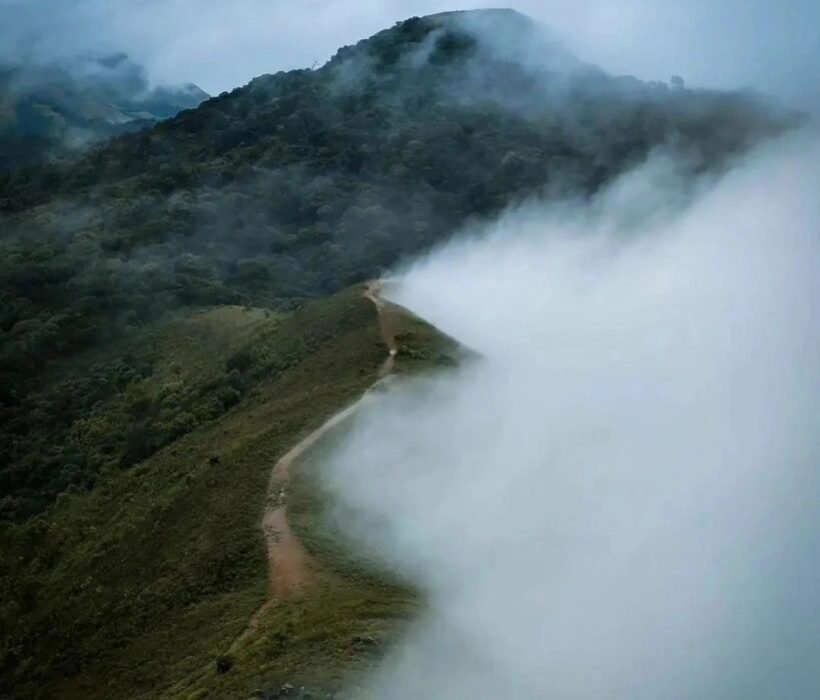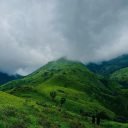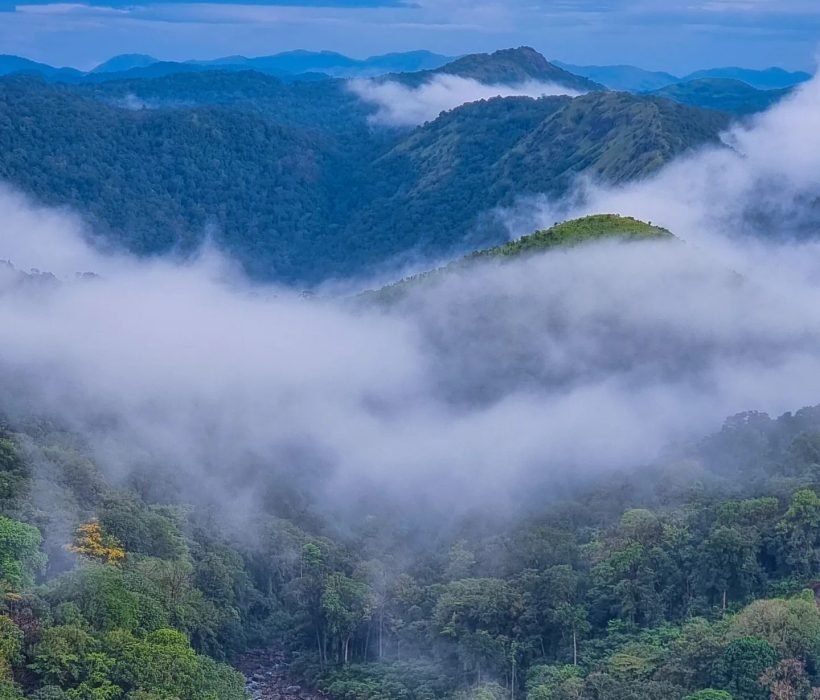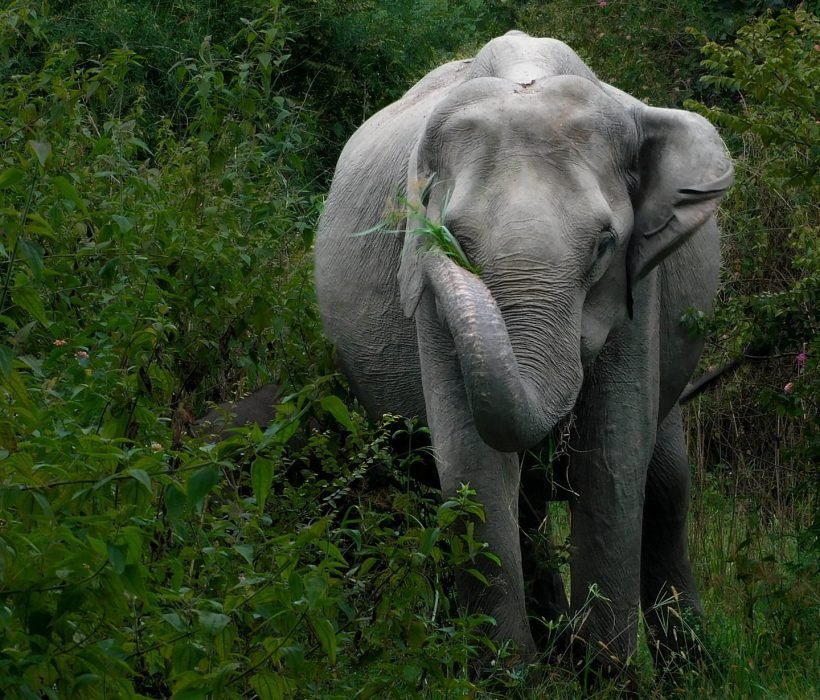Q: How to reach Iruppu falls from Coorg?
A: To reach Iruppu Falls from Coorg, you can drive or hire a cab. The distance is approximately 75 km. Head south on the Gonikoppal Road via Virajpet, and follow the signs to Iruppu Falls near the Brahmagiri Range.
Q: Should they permit us to bathe in Coorg Falls?
A: Bathing is allowed at some waterfalls in Coorg, like Iruppu Falls. However, it is prohibited at others, such as Abbey Falls, due to safety concerns. Always check local guidelines and follow posted signs.
Q: What are the places to visit in Coorg in the month of March?
A: In March, you can visit places like Abbey Falls, Raja’s Seat, Dubare Elephant Camp, Nagarhole National Park, and Talakaveri. The weather is pleasant, making it an ideal time for sightseeing.
Q: Is Abbey Falls in Coorg worth visiting?
A: Yes, Abbey Falls is worth visiting. It is a beautiful waterfall surrounded by coffee plantations and spice estates. The scenic beauty and the sound of cascading water make it a popular spot.
Q: Are there any must-visit places in and around Coorg? A: Yes, must-visit places in and around Coorg include Abbey Falls, Raja’s Seat, Dubare Elephant Camp, Nagarhole National Park, Talakaveri, Bylakuppe Tibetan Monastery, and Iruppu Falls.
Q: What are the places to see in Coorg?
A: Places to see in Coorg include Abbey Falls, Raja’s Seat, Dubare Elephant Camp, Nagarhole National Park, Talakaveri, Iruppu Falls, Bylakuppe Tibetan Monastery, and Madikeri Fort.
Q: Which are the best places to visit in Coorg in 2023?
A: The best places to visit in Coorg in 2023 include Abbey Falls, Raja’s Seat, Dubare Elephant Camp, Nagarhole National Park, Talakaveri, Iruppu Falls, Bylakuppe Tibetan Monastery, and Chelavara Falls.
Q: Which are the best places to visit nearby Coorg for 3 days?
A: For a 3-day trip, you can visit Coorg and nearby places like Mysore (Mysore Palace, Chamundi Hill), Nagarhole National Park, and Bylakuppe Tibetan Monastery.
Q: Where is Coorg? How is it a place worth visiting?
A: Coorg, also known as Kodagu, is a district in Karnataka, India. It is worth visiting for its scenic beauty, lush coffee plantations, waterfalls, wildlife sanctuaries, and pleasant climate.
Q: What are less famous but great places in Coorg?
A: Less famous but great places in Coorg include Chelavara Falls, Mandalpatti viewpoint, Tadiandamol Peak, and Chiklihole Reservoir.
Q: Is it worth going to Coorg and Vayanad in May?
A: Yes, it is worth visiting Coorg and Wayanad in May. Both places have pleasant weather, lush greenery, and beautiful landscapes during this time.
Q: Where can I find travel inspiration in Coorg?
A: Travel inspiration in Coorg can be found by exploring its natural beauty, coffee plantations, trekking trails, and visiting local tourist attractions like Abbey Falls, Raja’s Seat, and Dubare Elephant Camp.
Q: How to chart out a 2-day trip to Coorg – Travel & Tour?
A: For a 2-day trip to Coorg:
Day 1: Visit Abbey Falls, Raja’s Seat, and Madikeri Fort. Enjoy a coffee plantation tour.
Day 2: Visit Dubare Elephant Camp, Talakaveri, and Nisargadhama. If time permits, visit Bylakuppe Tibetan Monastery.
Q: What are some of the best offbeat places in Coorg?
A: Some of the best offbeat places in Coorg include Mandalpatti viewpoint, Chiklihole Reservoir, Nalknad Palace, and Kabbe Hills.
Q: What 5 places should you visit in Coorg within 1 day? A: In one day, you can visit Abbey Falls, Raja’s Seat, Dubare Elephant Camp, Madikeri Fort, and Omkareshwara Temple.
Q: What are the best places to visit in Coorg during December?
A: In December, visit Abbey Falls, Raja’s Seat, Dubare Elephant Camp, Nagarhole National Park, Talakaveri, and Iruppu Falls. The weather is cool and pleasant for sightseeing.
Q: What is the best time to visit Coorg’s hills of India?
A: The best time to visit Coorg is from October to March when the weather is pleasant and ideal for sightseeing and outdoor activities.
Q: What are the top offbeat places in Coorg?
A: Top offbeat places in Coorg include Mandalpatti viewpoint, Chiklihole Reservoir, Nalknad Palace, Kabbe Hills, and Chelavara Falls.
Q: What are the fun things to do in Coorg?
A: Fun things to do in Coorg include trekking, coffee plantation tours, river rafting at Barapole, wildlife safaris at Nagarhole National Park, and visiting waterfalls like Abbey Falls and Iruppu Falls.
Q: What are some popular tourist spots in South India? A: Popular tourist spots in South India include Coorg, Ooty, Munnar, Mysore, Hampi, Alleppey, Kodaikanal, and Pondicherry.
Q: What are some tourist attractions in Madikeri/Coorg?
A: Tourist attractions in Madikeri/Coorg include Abbey Falls, Raja’s Seat, Madikeri Fort, Omkareshwara Temple, and St. Mark’s Church.
Q: What things can we do in Coorg & Madikeri?
A: In Coorg and Madikeri, you can visit waterfalls, explore coffee plantations, go trekking, visit historical sites, enjoy wildlife safaris, and experience the local culture and cuisine.
Q: Is it good to visit Coorg in May?
A: Yes, it is good to visit Coorg in May as the weather is pleasant, and you can enjoy the lush green landscapes and waterfalls.
Q: How do I chart out a 2-day trip to Coorg?
A: For a 2-day trip to Coorg: Day 1: Visit Abbey Falls, Raja’s Seat, and Madikeri Fort. Enjoy a coffee plantation tour. Day 2: Visit Dubare Elephant Camp, Talakaveri, and Nisargadhama. If time permits, visit Bylakuppe Tibetan Monastery.
Q: What is the best way to enjoy a vacation in Coorg?
A: The best way to enjoy a vacation in Coorg is by exploring its natural beauty, visiting coffee plantations, going on wildlife safaris, trekking, and relaxing in the serene environment.
Q: Should any important places in Coorg be visited?
A: Yes, important places in Coorg that should be visited include Abbey Falls, Raja’s Seat, Dubare Elephant Camp, Nagarhole National Park, Talakaveri, and Bylakuppe Tibetan Monastery.
Q: Which are the most visited waterfalls in India? A: Some of the most visited waterfalls in India include Jog Falls, Dudhsagar Falls, Athirappilly Falls, Bhimlat Falls, and Abbey Falls.
Q: Can you tell me something about Mallalli Falls in Coorg?
A: Mallalli Falls is a picturesque waterfall located in the foothills of the Pushpagiri Mountains in Coorg. It is known for its scenic beauty and is a popular spot for trekking and nature lovers.
Q: What are the best places to see in Coorg on a one-day trip?
A: On a one-day trip to Coorg, you can visit Abbey Falls, Raja’s Seat, Madikeri Fort, Omkareshwara Temple, and Dubare Elephant Camp.
Q: Is it safe to travel to Coorg for 4 days now?
A: Yes, it is generally safe to travel to Coorg for 4 days. However, it’s always best to check current travel advisories and weather conditions before planning your trip.
Q: What are the top sights to visit in Coorg this June?
A: Top sights to visit in Coorg in June include Abbey Falls, Raja’s Seat, Dubare Elephant Camp, Nagarhole National Park, Talakaveri, and Iruppu Falls. The monsoon season enhances the natural beauty.
Q: How to plan a one-day trip to Coorg from Mysore? A: For a one-day trip to Coorg from Mysore, start early and visit Abbey Falls, Raja’s Seat, Madikeri Fort, and Omkareshwara Temple. End the day with a coffee plantation tour before heading back to Mysore.
Q: What are some tips on Coorg vacation?
A: Tips for a Coorg vacation include:
- Plan your visit during the cooler months (October to March).
- Book accommodations in advance.
- Carry comfortable clothing and footwear for trekking.
- Try local cuisine and coffee.
- Respect local customs and the environment.
Q: What drives people to visit Coorg?
A: People visit Coorg for its natural beauty, lush coffee plantations, pleasant weather, waterfalls, trekking opportunities, and rich cultural heritage.
Q: How can one reach Coorg?
A: Coorg can be reached by road from major cities like Bangalore (around 250 km) and Mysore (around 120 km). The nearest airports are Mangalore and Bangalore. The nearest railway station is in Mysore.
Q: For how many days should I stay in Coorg?
A: A stay of 3 to 4 days is ideal to explore the main attractions of Coorg and enjoy its natural beauty and activities.
Q: Misty Woods Resort, Coorg?
A: Misty Woods Resort is a popular accommodation in Coorg, known for its serene environment, comfortable amenities, and proximity to nature.
Q: Which is the most famous waterfall in Karnataka?
A: Jog Falls is the most famous waterfall in Karnataka and one of the highest plunge waterfalls in India.
Q: Can I visit Coorg in May with my wife?
A: Yes, you can visit Coorg in May with your wife. The weather is pleasant, and you can enjoy the scenic beauty and various attractions.
Q: Are the months of May/June a good time to visit Coorg?
A: Yes, May and June are good times to visit Coorg. The weather is pleasant, and the pre-monsoon showers make the landscape lush and green.
Q: Which are the most amazing waterfalls in Karnataka?
A: Some of the most amazing waterfalls in Karnataka include Jog Falls, Abbey Falls, Iruppu Falls, Shivanasamudra Falls, and Unchalli Falls.
Q: How is Coorg in July? Any suggested things to do?
A: In July, Coorg experiences the monsoon season, making the landscape lush and vibrant. Suggested activities include visiting waterfalls, coffee plantation tours, and enjoying the natural beauty.
Q: How is Coorg to visit in the second week of June?
A: Visiting Coorg in the second week of June is a good idea as the monsoon season begins, making the region green and beautiful. You can enjoy waterfalls, coffee plantations, and trekking.
Q: What are good places to visit in Coorg for a family trip?
A: Good places to visit in Coorg for a family trip include Abbey Falls, Raja’s Seat, Dubare Elephant Camp, Nagarhole National Park, and Bylakuppe Tibetan Monastery.
Q: What is the best way to spend 2 days in Coorg? A: The best way to spend 2 days in Coorg: Day 1: Visit Abbey Falls, Raja’s Seat, and Madikeri Fort. Enjoy a coffee plantation tour. Day 2: Visit Dubare Elephant Camp, Talakaveri, and Nisargadhama. If time permits, visit Bylakuppe Tibetan Monastery.
Q: Is it possible to go rafting in Kodagu (Coorg)?
A: Yes, it is possible to go rafting in Kodagu (Coorg) on the Barapole River, which offers thrilling white-water rafting experiences.
Q: Which are awesome locations for couples to visit in Coorg?
A: Awesome locations for couples to visit in Coorg include Abbey Falls, Raja’s Seat, Mandalpatti viewpoint, coffee plantations, and Kabbe Hills.
Q: Where can you enjoy wildlife in Coorg?
A: You can enjoy wildlife in Coorg at Nagarhole National Park, Pushpagiri Wildlife Sanctuary, and Brahmagiri Wildlife Sanctuary.
Q: Where is the Nidan Waterfall located in India? A: There is no well-known Nidan Waterfall in India. It might be a lesser-known or local name for a waterfall. Please verify the name or provide additional context.
Q: Latest Maha News?
A: I currently do not have access to real-time news updates. You can check local news websites or apps for the latest Maha news.
Q: Talakaveri or Nisargadhama, for a group of college students?
A: Both Talakaveri and Nisargadhama are great for college students. Talakaveri is ideal for nature lovers and those interested in the source of the Kaveri River. Nisargadhama is a scenic island with activities like boating, elephant rides, and a deer park.
Q: Which place is better to visit in April, Coorg or Ooty? A: Both Coorg and Ooty are beautiful in April. Coorg offers lush landscapes and coffee plantations, while Ooty offers tea gardens and a cool climate. Choose based on your preference for activities and scenery.
Q: What are some monsoon destinations in Karnataka? A: Monsoon destinations in Karnataka include Coorg, Jog Falls, Agumbe, Chikmagalur, and Sakleshpur.
Q: Which place is better to visit in August, Coorg or Kodaikanal?
A: Both Coorg and Kodaikanal are beautiful in August with lush greenery and pleasant weather. Coorg is ideal for coffee plantations and waterfalls, while Kodaikanal offers lakes, viewpoints, and a cooler climate.
Q: What precautions should I take during travel to Coorg?
A: Precautions for traveling to Coorg include:
- Carrying rain gear during the monsoon season.
- Wearing comfortable clothing and footwear for trekking.
- Keeping necessary medications and a first-aid kit.
- Following local guidelines and respecting the environment.
Q: Is it OK to visit Coorg in the rainy season?
A: Yes, visiting Coorg in the rainy season is okay if you enjoy the lush green landscapes and waterfalls. However, be prepared for rain and possible travel disruptions.
Q: Is August the best time to visit Coorg for 3 days?
A: August is a good time to visit Coorg for 3 days if you enjoy the monsoon season and lush greenery. The weather is cool, and the waterfalls are in full flow.
Q: Which place is better to visit in March, Coorg or Kodaikanal?
A: Both Coorg and Kodaikanal are great to visit in March. Coorg offers coffee plantations and pleasant weather, while Kodaikanal offers cooler temperatures and scenic viewpoints. Choose based on your preference for activities and scenery.
Q: What is the tour cost to Coorg?
A: The tour cost to Coorg can vary based on the duration of stay, accommodation, and activities planned. On average, a 3-day trip can cost between INR 10,000 to 20,000 per person, including accommodation, food, and transportation.













